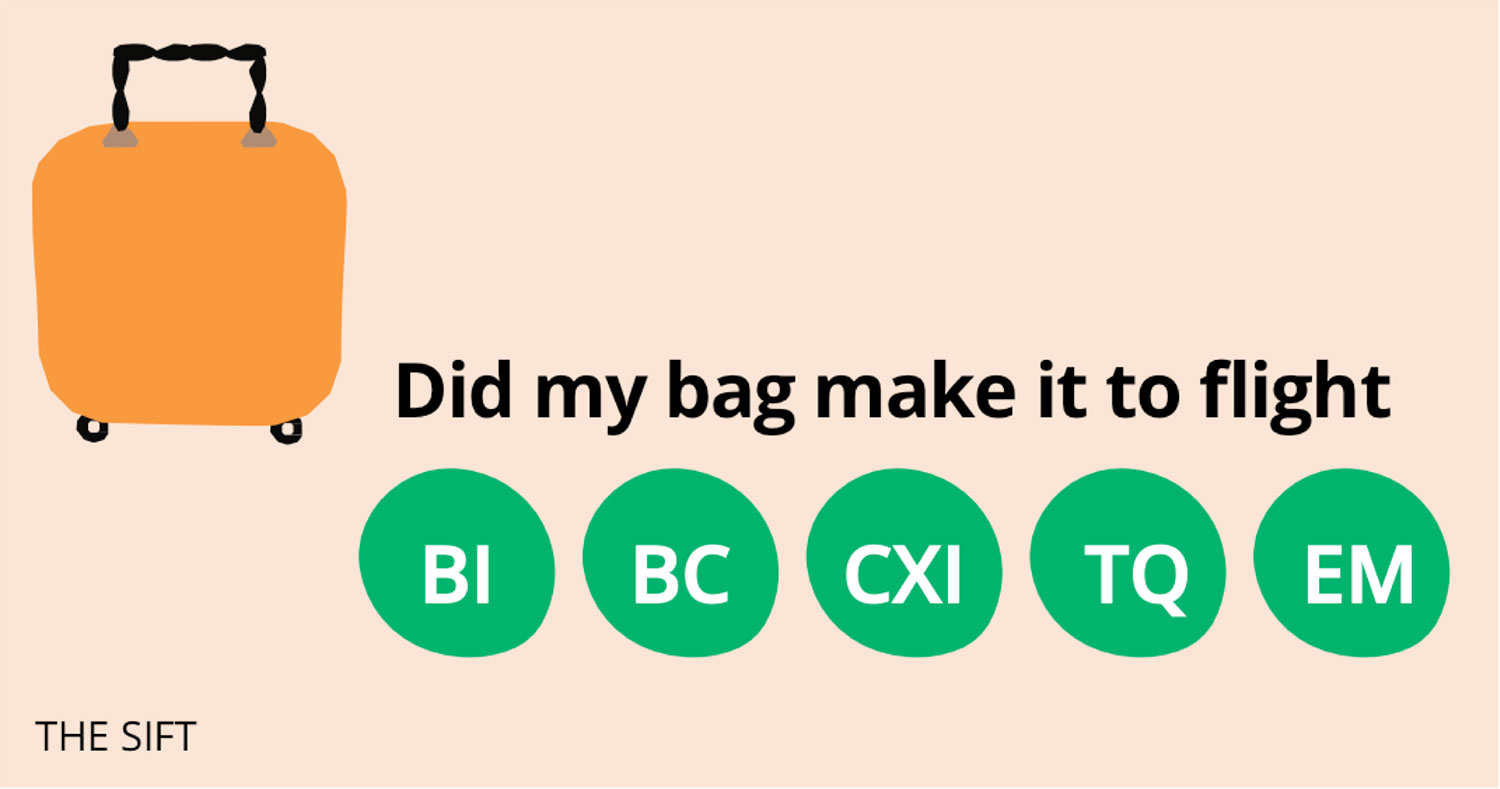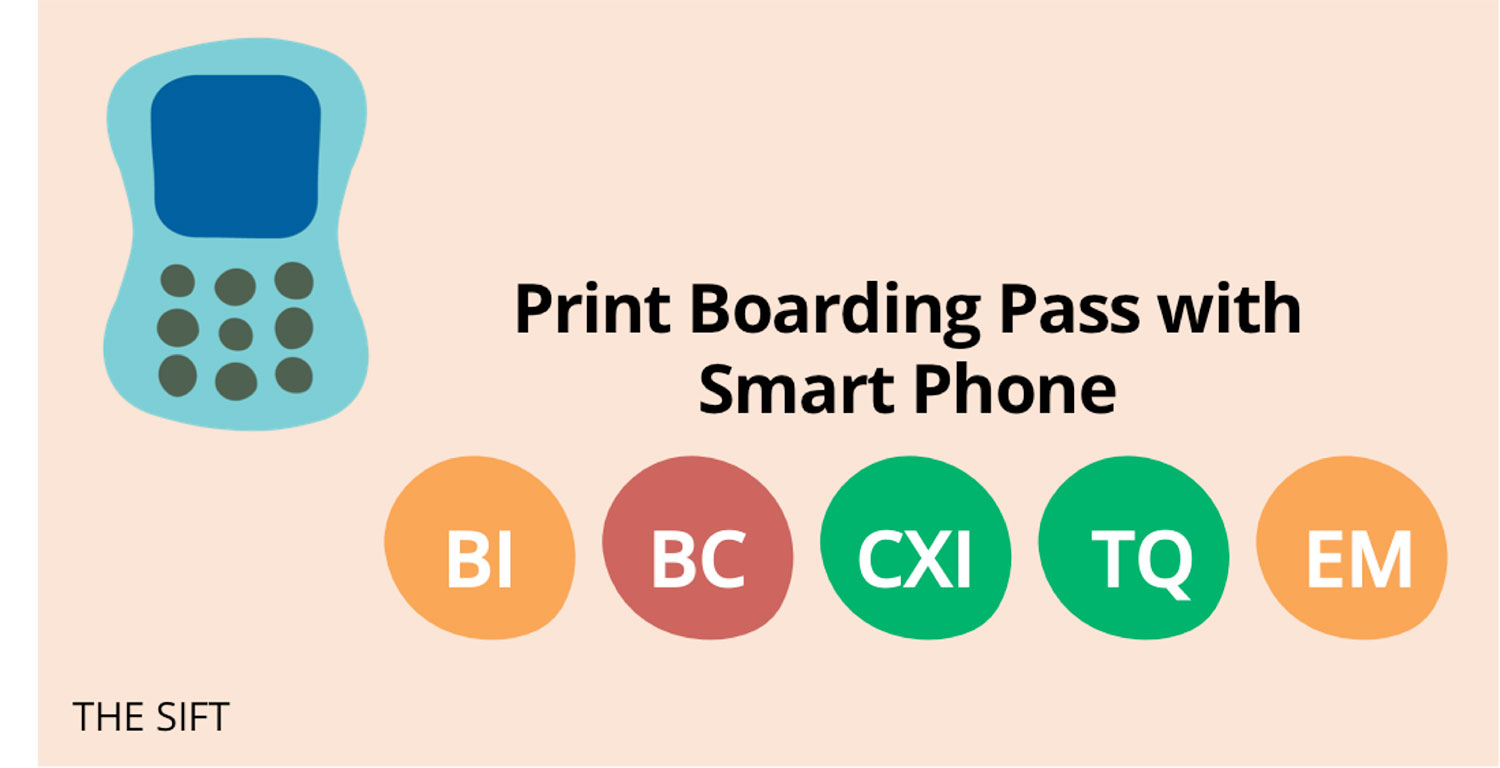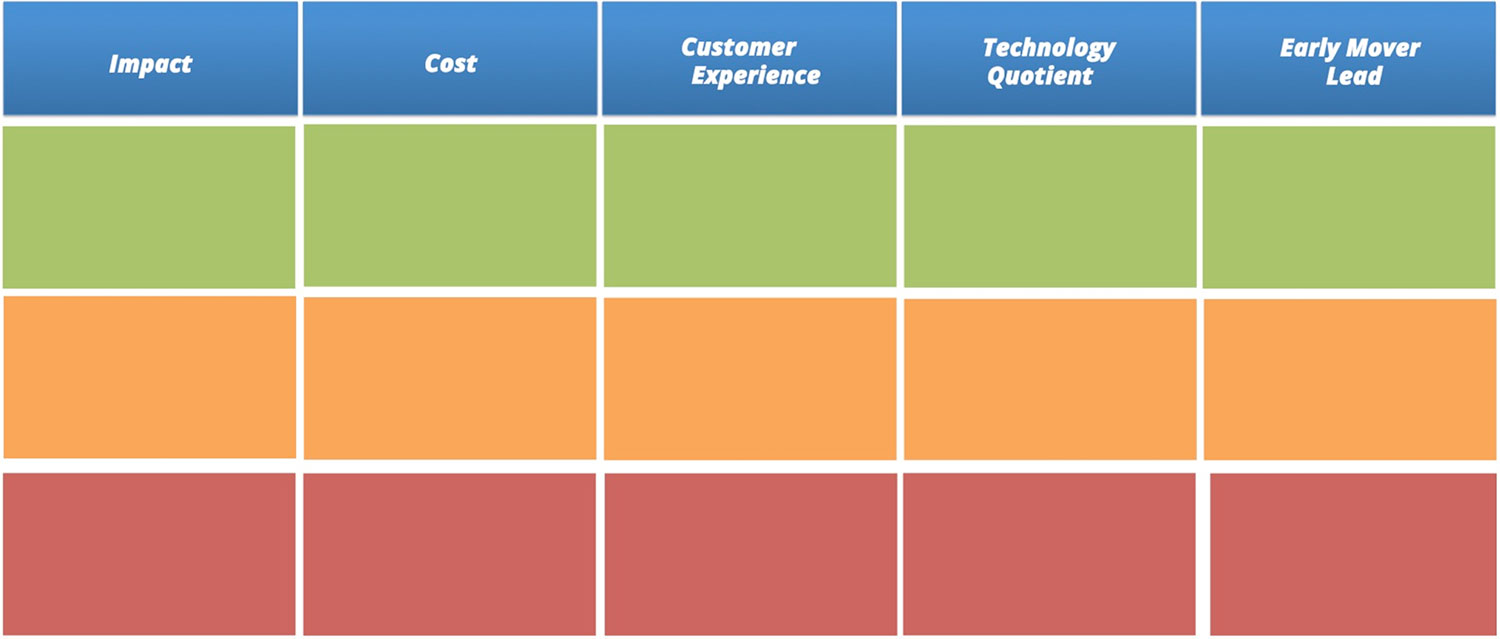
Identifying Worthy Ideas Using "The Sift"
When armed with an abundance of ideas, how do you recognize the valuable ones? The ideas that are worthy of being picked out and worked on to explore their potential business impact?
Thoughtworks’ The Sift does exactly that. It allows you to ‘sift’’ through a trough of your ideas to identify the one with the most prospects.
Using the The Sift, you can work through a list of ideas for the ones that are meaningful and worth a purposeful pursuit. This rapid idea evaluation system is based on a five point guideline:
- Business Impact
- Business Cost
- Customer Experience Index
- Technology Quotient
- Early Mover Lead
Each of these five points are assigned three qualities that range from exceptional to good to fair. Exceptional is colour coded with a green, good with orange and fair with red.
 Every idea of yours that goes through this filter stands the chance of being colour coded. Quite obviously, the best idea is the one with the most green ‘in’ it.
Every idea of yours that goes through this filter stands the chance of being colour coded. Quite obviously, the best idea is the one with the most green ‘in’ it.
To help you understand this better, here are two instances where The Sift was used on an idea.
Instance One
A well-known Indian airline company wanted to refresh their digital presence. They had weighty expectations of engaging customer experience and online conversions.
This called for experiential differentiators between this airline and its competition. From more than 100 ideas, Thoughtworks pruned the list down to the top ten using The Sift.
This is how one of the ideas fared on the idea evaluation system. The idea? ‘Did my bag make it aboard the flight’. This baggage tracking feature would ensure that customers don’t wait for luggage that never even made it to the flight. The intention was to get a head start in dealing with the ‘lost luggage’ hassle.
Let’s look at how this idea fared on the evaluation system.

Point 1- Business Impact: GREEN. Passengers would know for sure that their bags made it onboard. This alleviates any uncertainty associated with status on customers’ luggage
Point 2 - Business Cost: GREEN. The investment in software development for a minor feature is not a phenomenal cost.
Point 3 - Customer Experience Index: GREEN. Luggage being one of the biggest concerns for airline customer, the relevance of the idea was indisputable.
Point 4 - Technology Quotient: GREEN. The technology to realize the feature already existed in the market. A mobile application or an SMS based system would ensure the last mile connectivity.
Point 5 - Early Mover Lead: GREEN. This airline could be the to first to enable the baggage tracking feature amongst its competitors in India.
The idea; ‘Did my bag make it aboard the flight’ resulting in an all GREEN review, was issued a ‘good to go’.
The Sift can be modified to suit unique eco-systems. For example, a large healthcare provider may replace Customer Experience Index with Operational Feasibility. And instead of colour codes, a numbering or weightage approach can be applied to the system.
While The Sift can be leveraged by team leads who are leading a brainstorming session, it can also be used by individuals who are working on new approaches or ideas to their own particular project. Heads of businesses can also put the tool to use when evaluating growth or diversification strategies for the coming financial quarters or years.
Instance Two
In India, passengers are required to carry physical boarding passes through the secondary level of security. While getting a boarding pass printed outside the airport is a challenge, there are many passengers who perform a web check-in through their smartphones to save time.
The current scenario offers scope for innovative opportunities that could ease a passenger’s travel experience. One such opportunity is to use strategically placed (at airports) devices (like kiosks) that print out the passenger’s boarding pass through a touch or proximity based technology which is connected to the traveller’s smartphone.
Let’s run this idea through The Sift and see what comes of it.

Orange lights up the Business Impact because the airline industry is in ongoing discussions with the Directorate General of Civil Aviation to eliminate paper boarding passes altogether. Which means there is a possibility of business impact being very short lived.
It’s Red for Business Cost as quite a bit of effort and expenses are required to liaison with airports. Additional challenges include procuring hardware and development of requisite software.
A Green for Customer Experience Impact implies the huge value add for customers
A Green for Technology Feasibility is indicative of existing technologies like Near Field Communications (NFC) for Android devices and iBeacons for iOS devices. Another Orange lights up Early Mover Advantage because while it is definite, its impact in acquiring customers is tenuous at best. This is because passengers have viable alternatives in eBoarding passes, which can be printed even from Airports for a fee.
While an agile world demands continuous action, an overwhelming set of ideas can impinge that action. Companies can use The Sift in such situations and identify top ideas worthy of a purposeful pursuit and stay ahead of the competition.
Here’s a blank table of The Sift for you to use. Run your ideas through the table to see which ones fare better and are worth some serious investment in terms of time, effort and funds.

Disclaimer: The statements and opinions expressed in this article are those of the author(s) and do not necessarily reflect the positions of Thoughtworks.














